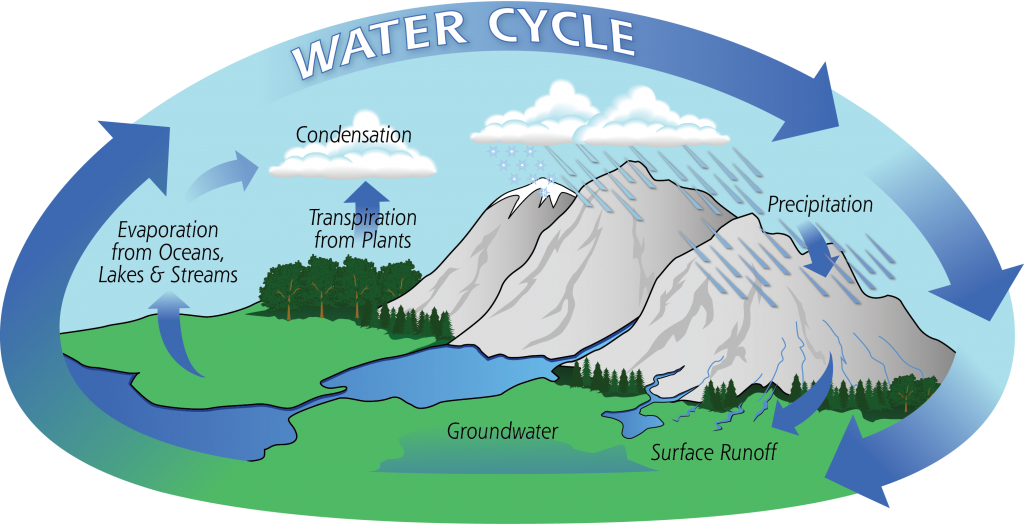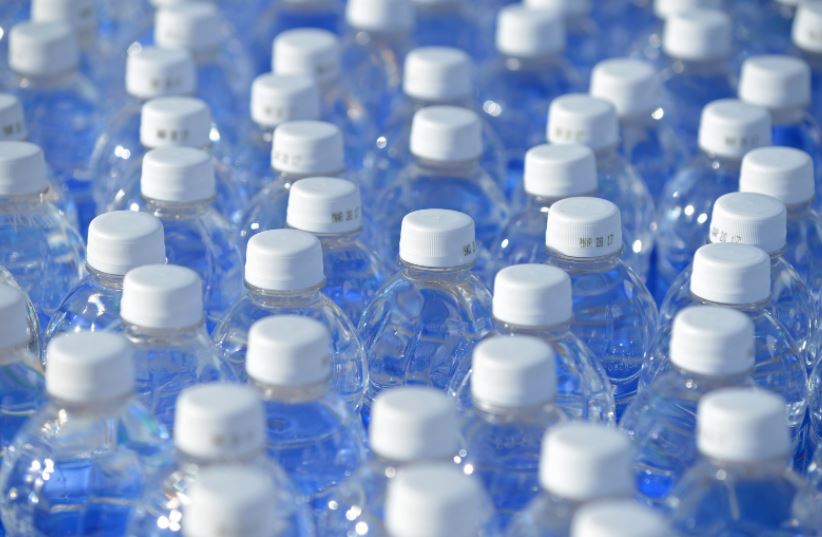Water moves between the Earth’s crust, atmosphere and oceans in a continuous cycle. The water cycle demonstrates the various processes that drive this movement. When we examine the Earth’s resources, water is considered a finite renewable resource as the availability of water is limited. There is no more water coming to Earth and therefore the water we have must be continuously recycled.

Water is essential to life on Earth. Approximately 60% of the human body is comprised of water, moving through the cells, carrying nutrients and removing waste products. The average person needs to drink at least two litres of water each day in order to stay healthy. Every day we use water in many other ways, however often we consume more than is necessary.
It can be fun to calculate your daily water use and can indicate some easy changes you can make to reduce the amount of water you use. This means that there is more water available for other parts of the water cycle. As our climate changes, water will become even more precious and it is important that we learn not to waste it.
Estimating your daily water use
The water cycle is comprised of sources and sinks. A source is the place where the water comes from and a sink is the location to which the water is transferred and stored. Are you a source or a sink of water in the water cycle?
To estimate your water use, for a day, start by calculating the amount of water used in these four activities: toilet flushing, showering, drinks of water and brushing your teeth. These are the major ways that we all consume water every day.
Remember to investigate the type of appliance you are using and the amount of water it consumes per unit of measure. For example, a shower is measured in litres per minute. Calculate how much water you used for each activity over the course of one day and record it in a table. The AusEarthEd video, The Water Cycle and You, demonstrates a calculation table you can use. Add up the totals for the activities to get a grand total – this estimates your water use for the day. Imagine how many drink bottles that is!

And the rest!
Look around you and identify the many other ways we consume water each day. These can include clothes washing, dishwashing, watering the garden, swimming pools, and even dripping taps. Can you think of anymore?
What can you conclude? Are you a water source or a sink? Can you think of easy ways to reduce your water use?
Next steps
- Measure your water use over a week and compare it to your daily use. Calculate the amount of water consumed by your household over a week and find ways to save water using the Household Water Use Calculator.
- Find out more about the water cycle and renewable resources at WASP.
- Explore water recycling in the Year 7 WASP STEM Resources.
- Investigate where your water comes from. This AusEarthEd blog on Water Treatment is a good starting point for your research.
